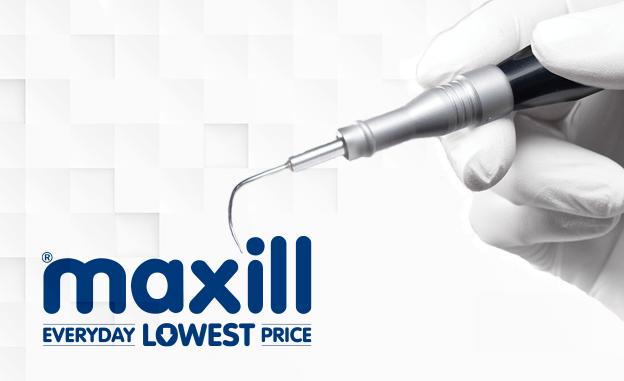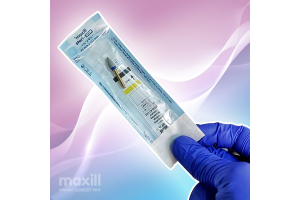Ultrasonic Scalers In Dentistry: The History and Science Behind Them and Benefits They Provide

Dentistry has evolved significantly, introducing innovative equipment and techniques to elevate patient care. Among these developments, dental ultrasonic scalers stand out as an important device in maintaining oral hygiene. As we discuss the history, science and application, we’ll discover the wealth of benefits these high-tech devices in modern dentistry can provide.
History of Ultrasonic Scalers:
The introduction of dental ultrasonic scalers dates to the mid-20th century when technological innovations started revolutionizing dental practices. An American periodontist introduced the first ultrasonic device in the 1950s, pioneering the use of ultrasonic vibrations for calculus removal. Since then, advancements in materials, technology, and design have enhanced these devices, making them a vital asset in dental offices worldwide.
Understanding the Science Behind a Magnetostrictive Ultrasonic System:
Dental ultrasonic scalers function on the principle of ultrasonic vibrations. These devices convert electrical energy into high-frequency mechanical vibrations. The rapid oscillations of the scaler tip, generates ultrasonic waves that energise the water from the unit, creating bubbles that grow and implode near the tooth surface. The imploding bubbles produce shock waves that effectively disrupt and dislodge dental plaque, calculus, and bacterial biofilm from tooth surfaces above and below the gumline without damaging the tooth structure.
Clinical Application in the Dental Office:
Dental ultrasonic scalers have many applications in dentistry, primarily in periodontal therapy and prophylactic cleanings. In periodontics, these devices are indispensable for scaling and root planing procedures, effectively removing calculus and bacterial deposits from periodontal pockets, while the water spray simultaneously acts as a lavage.
Furthermore, ultrasonic scalers have different tip designs, sizes, available in 25K or 30K inserts, giving versatility when addressing different clinical scenarios and areas of the oral cavity. They aid in efficient calculus removal even in hard-to-reach areas, enhancing precision and reducing treatment time compared to conventional hand scaling methods.
What is the Difference Between the 25K and 30K Ultrasonic Scaler Inserts?
The numerical designation of ultrasonic scaler inserts, indicated as 25K or 30K, represents the frequency of vibrations they produce. The 'K' represents kilohertz, indicating the number of thousand cycles per second.
25K inserts operate at 25,000 cycles per second, offering higher power and force generation, making them perfect for removing stubborn calculus. However, they may produce more vibrations and heat. Whereas the 30K inserts function at 30,000 cycles per second, providing finer vibrations suitable for delicate procedures like biofilm removal, with reduced heat generation and gentler vibrations.
The choice between these inserts depends on clinical requirements, the type of deposit, patient comfort, and the dental clinician's preference for power and precision during treatment or procedures.
What are the Benefits of Using an Ultrasonic Scaler?
Efficiency and Precision:
Ultrasonic scalers offer superior proficiency in plaque and calculus removal while preserving healthy tooth structure. The rapid pattern of the oscillating tips allow for precise cleaning, minimizing discomfort and reducing treatment time.
Improved Patient Comfort:
The gentle vibrations of ultrasonic scalers, combined with the cooling water stream, provide a more comfortable experience for patients compared to traditional scraping methods, reducing anxiety and discomfort during dental procedures.
Reduced Risk of Soft Tissue Trauma:
The oscillating movement of ultrasonic scalers is less likely to cause soft tissue trauma or damage to the surrounding tissues, contributing to better patient results and faster recovery.
Biofilm Disruption:
These devices successfully disrupt bacterial biofilm, reducing the risk of periodontal diseases and improving overall oral health.
Versatility and Adaptability:
With various tip designs and frequencies, ultrasonic scalers can adapt to different clinical situations, offering versatility in dental treatments for every patient.
Are There Potential Risks of Using an Ultrasonic Scaler?
While dental ultrasonic scalers offer numerous benefits, it’s essential to acknowledge potential risks associated with their use.
Prolonged or incorrect use can generate excessive heat at the tip, possibly leading to discomfort or thermal sensitivity or damage to teeth and surrounding tissues. Improper technique during scaling may cause gingival irritation or minor trauma, while some patients might experience sensitivity or discomfort, especially with exposed dentin.
Additionally, the use of an ultrasonic scaler produces aerosols containing oral microorganisms, warranting strict infection control measures for not only the patient but also the clinicians. Patients with specific medical conditions, like pacemakers or prosthetic implants, may require precautions due to potential vibrational interactions. Furthermore, improper usage near dental restorations can cause damage or possibly dislodging, and prolonged exposure to noise and vibrations may lead to discomfort.
Proper training, adherence to safety protocols, and effective communication between patients and dental care providers are all key factors in minimizing these risks and ensuring a safe and comfortable dental experience for all.
Conclusion:
Dental ultrasonic scalers have become a staple in modern dentistry due to their efficiency, precision, and elevation of patient comfort. Originating in the mid-20th century, these devices have evolved monumentally, finding widespread implementation in current day dental practices, equipment such as Ultrasonic Scalers continue to evolve, contributing significantly to oral hygiene and periodontal therapy. Appreciating the science behind ultrasonic scaling and recognizing its benefits, emphasizes its crucial role in maintaining optimal oral health for patients nation wide.







